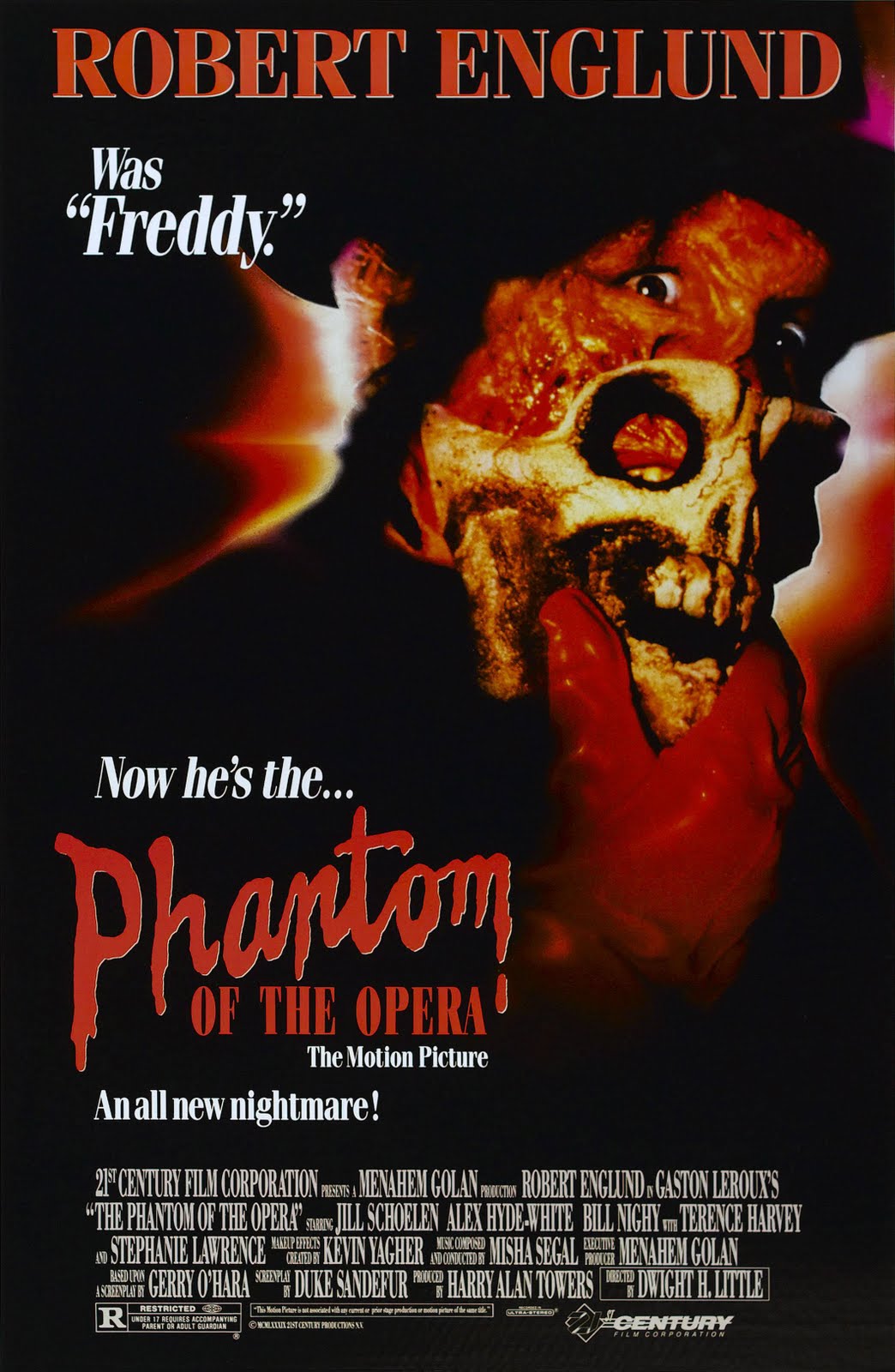

However, Phantom of the Opera has better element separation, richer colors, and tighter blacks than the set average. it has a number of minor print artifacts (white flecks and scratches) and has been a shade over-sharpened, leading to slight edge haloes. This transfer matches the other MGM catalogue transfers that Scream hasn’t taken the time to ‘fix,’ i.e.
The phantom of the opera 1989 tv#
Because MGM tends to strike their own HD transfers for use on TV and digital screening, I assume that both Infopictures and Scream’s transfers are comparable (though I don’t know enough about Infopictures to guess how compressed it is). Scream Factory was beaten to the punch on Blu-ray by a RB German release from Infopictures. It was a barebones ‘flipper’ – anamorphic 1.85:1 on one side, 1.33:1 open matte on the other. Phantom of the Opera was first released on DVD in 2004 from MGM. If only it all of the pieces fit together. The bloody kill scenes are dynamic, bolstered by energetic camera moves and Dutch angles, especially the sequence in which Englund takes on a trio of would-be muggers (very Sam Raimi’s Darkman, 1989). As long as he’s focusing on smoke, mirrors (literally, in many cases), and gory special effects, he does very well. Little is evidently hampered by his small budget and adherence to late ‘80s horror trends, but he really goes for broke when shooting those haughty costumes and baroque sets. Sometimes, The Phantom of the Opera feels like a proper late-’80s slasher meeting the melodrama of a ‘60s-era Hammer or Roger Corman costume drama, but the detached nature of the disparate elements and deep dips in narrative momentum draw out the 93-minute film out to impossibly boring lengths. The results are as spotty as that description implies. The compromise was an occasionally quite handsome period piece that awkwardly paused for gory murder scenes and was flanked by goofy bookends set in 1988.

The people in charge knew that Englund’s popularity and persona was the selling point and that modernizing the story was important to those sales, while someone else (probably Englund) wanted to make a proper romantic period piece that stuck closer to Leroux’s source material. You don’t have to be familiar with the behind-the-scenes story to know that accommodations were made.

Likely as a result of its Freddy-centric inception, The Phantom of the Opera reeks of concession. The script, by workhorse screenwriters Gerry O'Hara and Duke Sandefur, was built around the Freddy persona and the advertising materials were eager to remind audiences of Englund’s popular persona (“Robert England was Freddy, now he’s the Phantom of the Opera”) that some audiences were famously confused as to if Phantom of the Opera was some kind of Nightmare on Elm Street sequel or spin-off. Jason in 2003, and was appearing on weekly television as the host of Freddy’s Nightmares (1988-90).

At the time, Englund had just starred in Renny Harlin’s A Nightmare on Elm Street 4: The Dream Master (1988), which was the series’ biggest hit until Ronny Yu’s Freddy vs. That is, at least, in the long run, because, back in 1989, it was sold on the back of actor Robert Englund, who appeared in the title role at the top of his Freddy Kruger celebrity. Little’s version is notable for its horror-centered approach to adaptation. Of the maybe one dozen feature-length versions of Gaston Leroux's Phantom of the Opera (French: Le Fantôme de l'Opéra, originally published between 1909 & 1910), Dwight H.


 0 kommentar(er)
0 kommentar(er)
